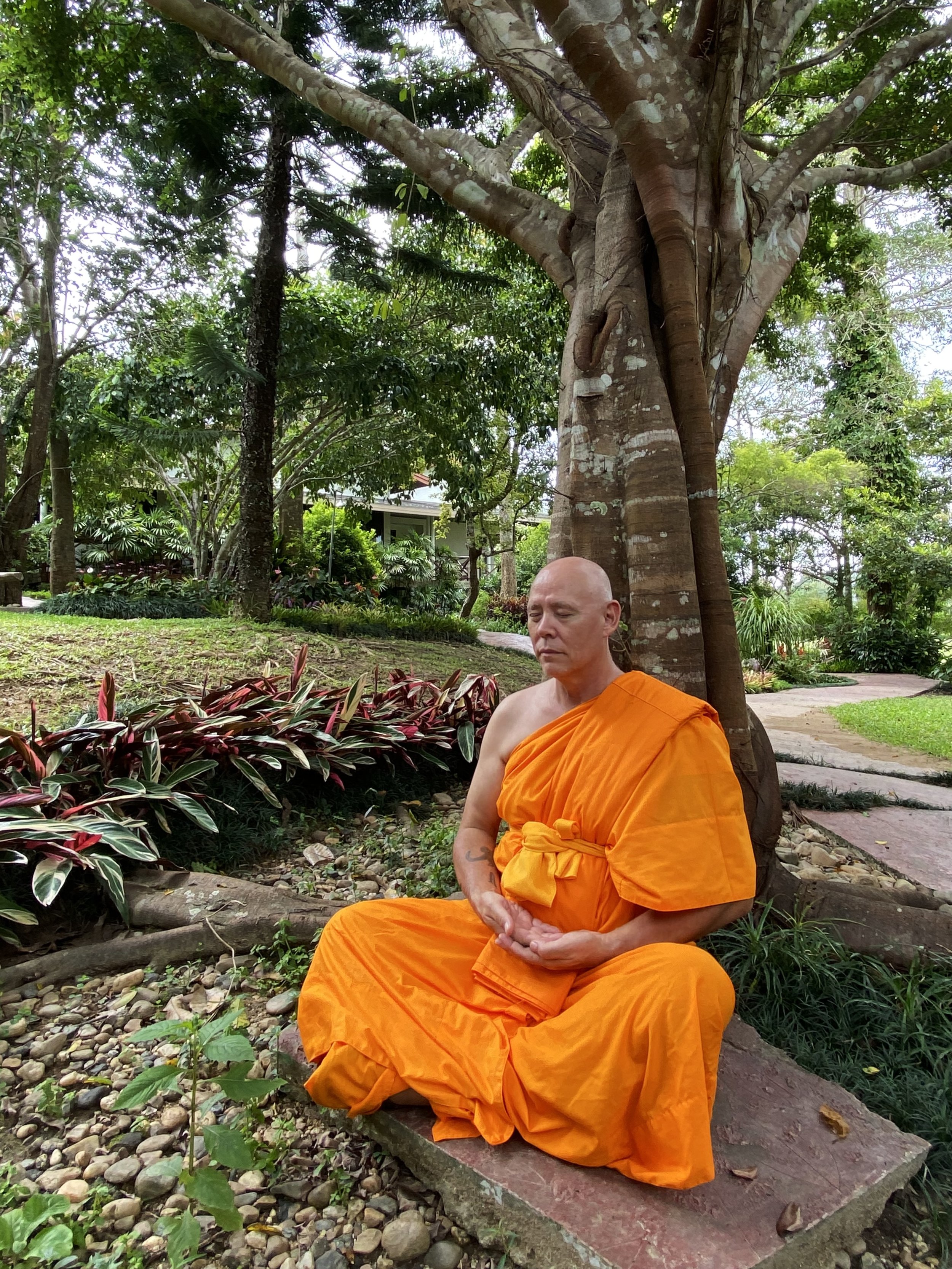How to calm your busy mind
I can say from experience that the best way to learn how to meditate is to become a Buddhist monk. That option isn’t available to most people, so I decided to take the best bits I learned from my time as a monk and turn them into a Skillshare course. It’s called Stillness Meditation - How to calm your busy mind.
If you’ve ever tried to meditate but found it almost impossible to calm your mind, welcome to the club. We see so many articles about health and wellness that say, “Start meditating! It will change your life.” but when we try to meditate it’s often frustrating. I was in the same boat as most people trying to figure out the process and benefits of meditation. It’s not always immediately obvious what good meditation does for us, but once you’ve had just ONE feeling of calm and serenity while meditating it’s addicting.
I can tell you one thing: meditation isn’t difficult. It’s a series of steps that allow your mind to come to a gradual stop so you can enjoy some peace. Your mind is like a jar of sparkles. It’s constantly being shaken up, causing chaos and turbulence throughout the day. The only way to make the sparkles stop is to…(dramatic pause) put the jar down.
Stillness is the only way you can calm your mind and give it the peace it craves. But that’s not something we tend to think of when faced with deadlines, social media, breaking news and life in general. We need a system. Thankfully, I’ve learned that there is one. It has four steps: Comfort, Sati, Sabai and Reset.
Those four steps are precisely the meditation steps I learned as a monk. Although they weren’t taught to me in this specific order, I realized that calming the mind takes steps. Why? Because it’s hard to stop your mind by slamming on the brakes. Slowing down the mind takes time and attention. It needs to be gentle and gradual. It needs to be thoughtful. But how do the steps work?
Comfort
Meditation is a physical activity that requires you to be comfortable. Think about it; during meditation, you’re going to sit for a period of time without moving. Whether that’s ten minutes or an hour, your comfort matters. In other words, don’t sit on the ground. I recommend you sit in a chair. The more comfortable you are the easier it will be for you to enjoy your experience.
Sati
Sati means “gentle focus”. Once you are comfortable it’s time to let those sparkles in your mind to settle. Sati helps you slow your mind down by giving it a task for focus. Everyone has a way to focus that works for them. Try counting your breaths from one to ten. Visualize articles from around your house. Feel sensations from your body like the air coming in and out of your nose.
Sati helps you slow your mind down by giving it something to focus on.
Sabai
Sabai means “take it easy” or “take it slow”. Sabai is the part of meditation where you stop doing anything. You let go of any focus or thoughts at all. This is a time for peace and contentment. Sabai, Sabai. This is the art of doing nothing. Enjoy the calm and serenity. This is the clarity you feel when your mind is settled.
Reset
If you’re having difficulty slowing your mind down and you just can’t shake the crazy thoughts then try a reset. A reset is an under-appreciated part of meditation that can be useful for anyone, especially newcomers. To reset, just open your eyes. Look around the room and see that you’re in reality. The thoughts you were thinking disappear immediately. It’s like they were never there in the first place.
Now close your eyes, Sati, Sabai and try again.
Believe it or not, that’s about all there is to meditation. Remember, it’s a practice that gives your mind the stillness it needs to cope with everyday life and all it’s craziness. As a monk I was able to still my mind to a point where my meditations took me to whole new experiences. You can get there too but I recommend you just try meditating on a daily basis first. Calming your mind will give you brand new superpowers to deal with life with tranquility and wisdom. That's why I created this course- to teach people how to calm their minds and find the peace they're looking for.
